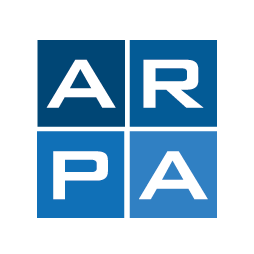- For the exclusive use of professional dentists.
- (+34) 973 271 434
- info@arpadental.com
For the exclusive use of professional dentists.
Implant-based prostheses
We offer all kinds of implant-supported restorations.
At ARPA Dental Laboratory we offer all kinds of restorations of milled dental prostheses, making it a priority that:
- The adjustment and passivity of the implant structure, designed and milled by our Dental CAD/CAM system, will be excellent.
- The functionality and aesthetics, taken care of by our dental technicians, is the one required by the clinician and their patient.
- Allowing greater durability and hygiene for better oral health of the patient.
We work with the full range of implants from the most prestigious brands such as Straumann, Nobel, Astra, Alphabio, Klockner, Biomet 3i, Talladium…

-
Description

Implant-based prostheses are attached to the patient's mouth by implants which, in turn, are integrated into the bone, instead of being supported by the patient's teeth or mucosa.
The clinician takes the dental record (using an intraoral scanner or an impression tray) and sends the impression to our Dental Laboratory for the subsequent manufacture of the implant-supported prosthesis with Dental CAD/CAM technology and with a customised finish of each implant-based prosthesis.
Once the necessary tests have been carried out, and after achieving the desired objectives, the dentist will definitively place said dental prosthesis in the mouth.
THESE DENTAL PROSTHESES MAY BE FIXED, REMOVABLE OR COMBINED.
-
Types of implant-based prosthetic restorations

- ABUTMENT: An individual restoration for a specific tooth on a screw-retained implant with the purpose of subsequently mounting a cement-retained crown or bridge on top.
- CROWN: An individual restoration for a specific tooth on a screw-retained implant.
- BRIDGE: A type of implant-based prosthesis, mounted on implant abutments or screwed directly to the implant which substitutes the gap of at least one tooth, supporting the prosthesis in one or more implants.
- HYBRID: A complete fixed restoration screw-retained on an implant. It consists of an internal metallic structure coated with acrylic, which supports the prosthesis to the implants and, in turn, supports artificial fixed teeth.
- OVERDENTURES OR COMBINATIONS: A type of complete, removable, acrylic restoration which is anchored on top of a fixed prosthesis (Ackermann or Dolder bars), joined together by a system of anchors.
- REMOVABLE ON IMPLANTS: A complete, removable, acrylic restoration that is anchored on top of attachments which are screwed directly to the implant.
- TEMPORARY: Temporary prosthesis on implants.
-
Materials

- MILLED COBALT CHROMIUM: A hard metal which, at the same time, is flexible and resistant. Highly accepted and used. Minimum thickness of 0.4 mm. It can be coated with ceromer or with ceramic.
- ZIRCONIUM: Zirconium is a biocompatible material. Like teeth, it is white or yellow in colour, therefore more aesthetic. Very hard. Minimum thickness 0.5mm. It can be coated with ceromer or with ceramic. There is also the possibility of doing it in monolithic zirconium without coating. All of our zirconia prostheses come with a titanium interface.
- PEEK: A new material in the sector. Very biocompatible. Maximum hardness, flexible and very light. Aesthetic colour. It will always be covered with ceromer. All of our peek prostheses come with a titanium interface.
- TITANIUM: Titanium is a very light and biocompatible material. Ideal for patients with allergies to metal. Its use in dental prostheses is exclusive to hybrids and Ackermann bars.
- PMMA for temporary dental implants: Milled in our dental laboratory using a Dental CAD/CAM system. An aesthetic material for prostheses to be used for a limited amount of time before placing the final dental prosthesis.
-
Technical Characteristics

All our production of structures for this type of dental prostheses is made with virtual design programs and processed by milling or sintering.
Our Dental CAD/CAM system allows us to:
- Give an excellent fit, precision and passivity to our implant work.
- Put angulations in the chimneys of the implants up to 30⁰.
- Use a wide variety of materials.
- Work with all kinds of dental implant brands.
Once the structure is produced and after the clinical check-up, the laboratory proceeds to coat the structure with aesthetic material, which could be either ceramic or ceromer, giving our work a high biofunctional, aesthetic and natural value, with our glazing techniques, make-up and final finis
Advantages of our dental prostheses
WHAT MAKES US DIFFERENT?

High aesthetic natural finishes

Dental CAD/CAM design and production

Faster and more accurate processing
Implant works
Other treatments
Keep learning about our prosthetic solutions
Subscribe to receive the latest news
- Dr. Combelles, 7 - altell 25003 Lleida
From Monday to Thursday: from 7:00 a.m. to 7:00 p.m.
Friday: from 7:00 a.m. to 3:00 p.m. - (+34) 973 271 434
- info@arpadental.com

Copyright © 2018 - 2025
Web project developed by ACTIUM Digital

